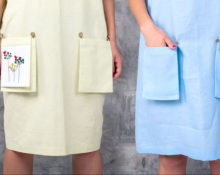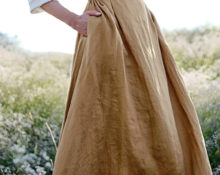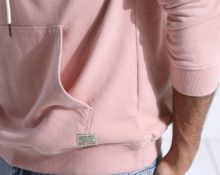 Patch pockets are easier to make than mortise pockets. But they will also require special attention. For example, to get an even product, you need to draw it correctly. To sew it correctly, it must first be basted with the part. And to create seams along the edge of the flap and the pocket itself, you will need to iron it. More about all this later in the article, as well as about the types of patch pockets with flaps.
Patch pockets are easier to make than mortise pockets. But they will also require special attention. For example, to get an even product, you need to draw it correctly. To sew it correctly, it must first be basted with the part. And to create seams along the edge of the flap and the pocket itself, you will need to iron it. More about all this later in the article, as well as about the types of patch pockets with flaps.
Shapes of patch pockets
Typically, pockets in this category are separated by the shape itself. The principle of their creation remains virtually unchanged. What is most interesting, as some masters are used to thinking, the valve always follows the lower lines along the bottom, but this is not entirely true.
The valve can also be made triangular, although the bottom of the product will be square with soft rounded corners.

Processing a patch pocket with a flap
With a detailed description, even a beginner can make such decorations.
Pattern of a patch pocket with a flap
As a pattern you will be working with rectangles. The bottom one is for the pocket itself. Mark the width and length for it. The edges can be round or have other shapes. The flap is always made wider than the bottom pattern. It will also require length and width and sketch out the details on the fabric in advance. Then make small seam allowances and you can cut out the finished parts.
Duplicate details

Usually the master makes such elements from two layers. Therefore, it is worth transferring the patterns again and cutting out more such figures.

We combine and grind the parts
Connect the finished cuttings together, make small folds of the fabric inward.
Important! Combine wrong sides together.
Next, in order not to displace anything, you will need to carefully grind down the attached parts. This can be done with simple pins or small stitches. It's no secret that For simple stitching, craftsmen very often use a contrasting thread, it is very convenient.

Advice! To get smooth edges and very straight seams, you can use an iron to press future seams before laying the main seam along the edge between the joined parts.
Valve
Learn more about how to work with the valve of the future product. How to mark it correctly, and what to do with the fabric so that it is sewn very evenly?

Basting and ironing parts
We chose the shape of the product itself and its top cover. Then it is better to use special paper; if desired, you can take ordinary leaves. The product itself is not so large, and therefore sheets of paper from a notebook will do; it is very convenient to make a drawing on a sheet of paper in a checkered pattern.
Draw the shape and dimensionsthat fit the model. Then you need to transfer all this to the fabric. Just cut out the finished drawings, attach and trace with a sewing marker. If this was not at hand by the craftswoman often use a small piece of soap. This does not spoil the fabric and the line is clearly visible, even on light fabric. But the main thing is that getting rid of it will be much easier and without stains. They cut out and made sure to iron the finished parts. Just try not to pull out the corners of the fabric with the iron, just light ironing.
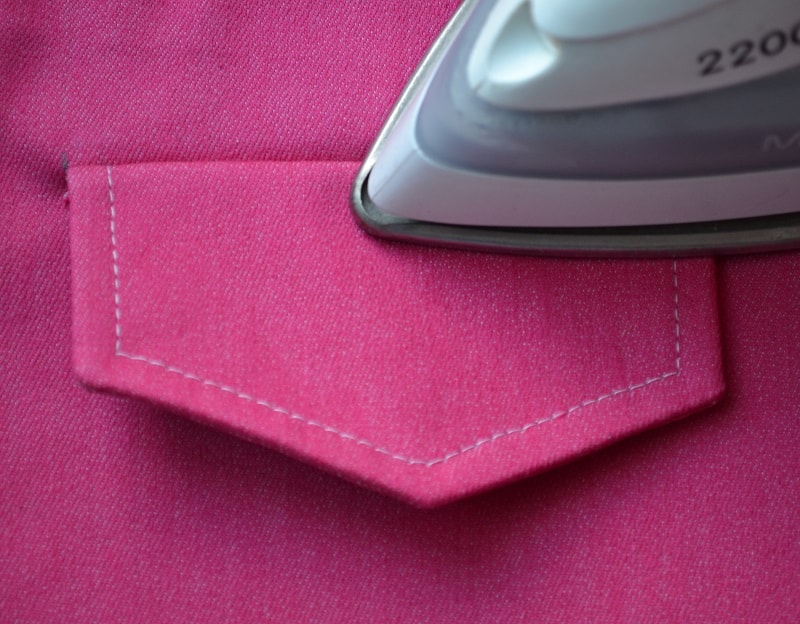
Turn it right side out
When connecting the parts, you can align them with their right sides, but in this case, you will then need to turn the parts inside out and iron the seams. Additionally, you will need to make seam allowances of approximately 0.5 cm from each edge. The seams should be laid at this distance.

Ironing and stitching are evident
Another ironing was done on the front side, and the part received its clear outlines. It's time to decorate it with an additional stitch, but from the front side. It is advisable to lay the stitch itself at a distance of only 0.1 cm from the edge.

Detailed description for the bottom of the pocket, the compartment itself.
Top hem
To obtain such a dense part on the top side, you will need to make additional allowances at the time of creating the pattern. Next, this part is simply tucked in and is “locked” inside the compartment in the back of the fabric.

Connecting a pocket with products
After all the seams are completed and the fabrics are secured together, an equally interesting and responsible process begins. How to fix the product exactly in place? Geometric skills can be used.
First, use a special marker or a piece of soap to draw a perpendicular. This is a line at right angles to the bottom line of the product, and continue this line until it intersects with the pocket location. Then build a perpendicular again, but to the continuation line. Here is the line on which to place the bottom side of the product.
Basting
The place for the pocket has been determined and you can attach it. You can use needles or a few stitches of contrasting thread.

Sew on a pocket
It is better to sew the pocket strictly along the line that connects the fabric of the compartment. But you can also lay an adjacent line. Just do it carefully and at regular intervals. The presser foot of the machine helps with this. Usually its width is 0.5 cm. Therefore, you can simply retreat to the width of the presser foot and calmly make an even and neat seam.
Ironing
Remove pins or pull out contrasting thread. Now it’s the iron’s turn to again smooth out the product already sewn to the base.
Pocket and valve connection
There are two ways to connect the pocket and the valve. Externally, they are practically no different. Although the first one is that sewing it from the inside is much more convenient. Let's look at both next.
Basting
Initially, we drew a line on which the object should be located. For even marking, also use the perpendicular technique.

Attaching the flap to the pocket
At first Let's try to connect using the first method. This is to apply the object with its inner side to the line, and skip the line. The valve in this position seems to be simply open. Next, we close it and evaluate the work.
Second way involves immediately making a fold, and you will need to stitch through several layers. This is not always convenient.
Ironing on 2 sides
Sew it in the way you like, and now you can iron it on both sides.
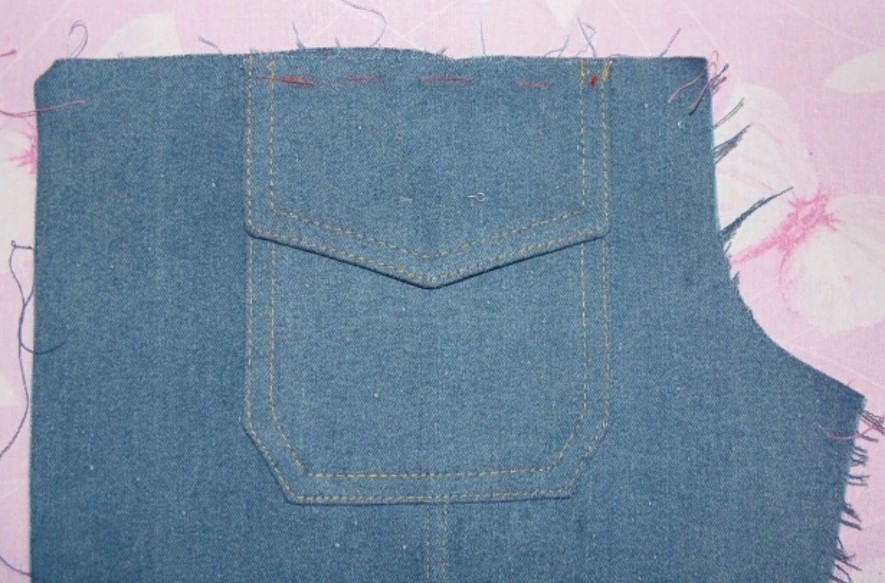
Basting clothing details
Now is the time to pay attention to the details that will decorate this product and clothing in general. At this stage you just need to apply and determine the locations. It is better to mark them also with markers.
Sewing clothing details
It's time to pick up a needle and thread.

Important! When fastening buttons that do not match the color of the fabric, use thread that matches the color of the fabric. Rarely does a craftsman use thread that matches the button itself.
They sewed it on and assessed their work. You can decorate not only with buttons, but also with different buttons and even rhinestones. Create a beautiful canvas from rhinestones.

These are the steps that the craftsmen use to achieve perfectly even pockets. It will be difficult to distinguish such work from factory work. The lines turn out smooth, and the craftsmen are happy.


 0
0
